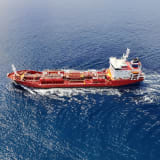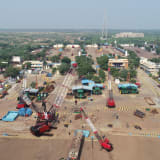
The top chip producer Taiwan Semiconductor Manufacturing Co. (TSMC) has made bold plans to produce 6-nanometer chips at its second plant being built in Kumamoto located in Southwestern Japan. The total investment for the project is forecasted to cost TSMC approximately 2 trillion JPY. The Japanese government is said to be providing subsidies for close to half of that investment amount as the project is set to give Japan a big boost in improving its know-how through its domestic talent pool.
TSMC’s plans in shifting its factories to Japan has already created numerous job opportunities in Kumamoto and its neighbouring prefectures.
Whilst this bodes well for the semiconductor industry in Japan, this has put a strain on the local shipbuilding committee. This is more evident for shipbuilders with construction facilities in the neighbouring Kyushu regions – namely JMU SY (Ariake), Namura SY (Imari), Minami-Nippon SB (Oita), Saiki Ind. (Oita) and Oshima SB (Nagasaki). On top of a general labour shortage in Japan, shipyards are starting to struggle more so than ever to recruit fresh talent for the vessel construction business in the neighbouring regions. Entry to mid-level engineers have turned to the cozy offerings of air-conditioned desk bound jobs at TSMC factories, as opposed to the less prestigious and more labour-intensive roles available in the shipbuilding industry.
Furthermore, in the face of a global chip shortage, the semiconductor business is becoming highly profitable and the way things are going, it is likely to stay this way in the long term. Chip manufacturers are therefore able to offer entry to mid-level workers much higher salaries allowing them to scout and recruit the right talent. This has added a further dent to the attractiveness of the vessel construction business to the local labour pool in the surrounding regions around Kumamoto. The effect of this labour and talent shortage can already be witnessed in the lack of ability of the shipbuilding business to ramp up its production capacity despite healthy levels of newbuilding demand from various shipping sectors.
The struggles of shipbuilding construction in Japan are likely going to get more severe, as they continue to be called upon to design and build highly efficient vessels with alternative green fuel propulsion offerings. It is very likely that the shipbuilders may gradually lose their competitive edge over the years as the shortages are likely to add on further cost to the industry in the long run.
Will the ship construction business be able to come together and rise above this systematic challenge caused by other booming industries? This remains to be seen…
Articles
You may also be
interested in
View allGet in touch
Contact us today to find out how our expert team can support your business














